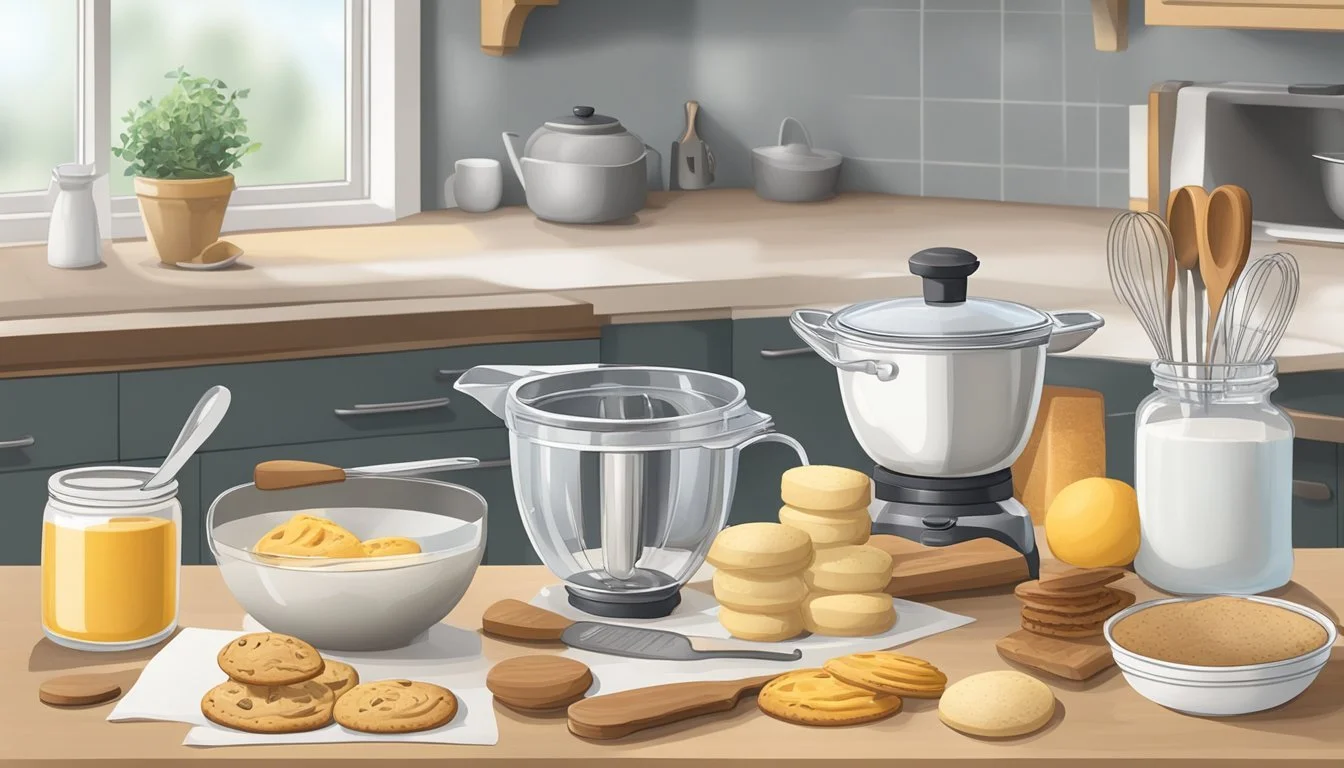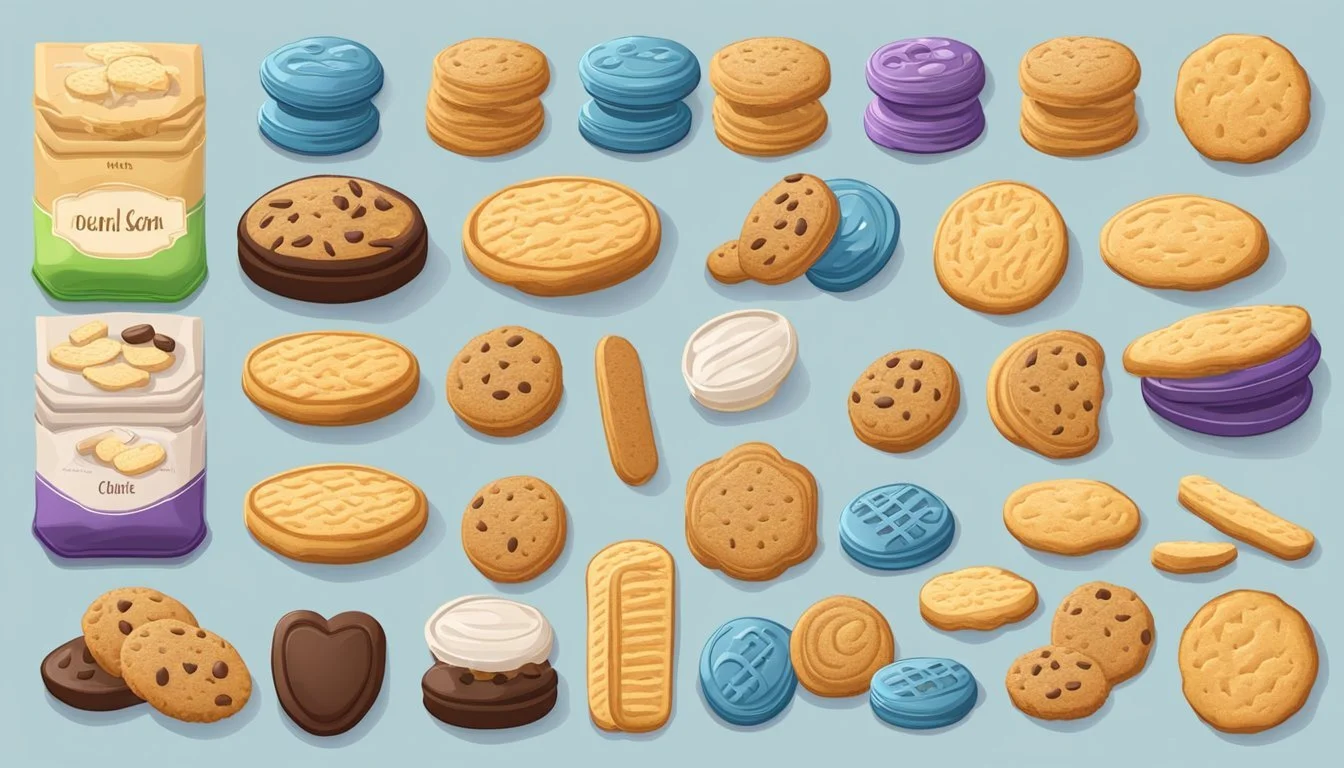Are Langues de Chat Vegan?
Unveiling the Ingredients of Classic French Biscuits
Langues de chat, which translates to "cat's tongues," are classic French biscuits recognized for their light, crisp texture and characteristic shape. Traditionally, they are made with ingredients like butter, sugar, flour, and egg whites. The presence of dairy and eggs in the conventional recipe means that standard langues de chat are not vegan.
However, with the rise of veganism and the growing demand for plant-based alternatives, several adaptations of the original recipe have been crafted to cater to vegan dietary preferences. Instead of using butter, vegan versions might use plant-based margarines or oils. Egg whites can be replaced with various vegan substitutes such as aquafaba, which is the liquid from canned chickpeas, or commercial egg-replacement products. The shift towards inclusive baking has allowed vegans to enjoy these delightful biscuits without compromising on their dietary ethics or the indulgent experience langues de chat provide.
What Are Langues de Chat?
Langues de chat, also known as "cat's tongue cookies," are a classic French dessert known for their distinctive shape and crisp texture.
Origin and Cultural Significance
The term "langues de chat" translates to "cat's tongue" in French, a name derived from their long, flat, and narrow shape that resembles a cat's tongue. These delicate biscuits hold a beloved place in French patisserie. The origin of langues de chat is deeply rooted in French culinary traditions, and they are commonly enjoyed as a light, elegant treat often served with tea or ice cream.
Characteristic Ingredients of Langues de Chat
The typical composition of langues de chat cookies includes:
Butter: The foundation of the biscuit's richness and tender texture.
Sugar: Adds sweetness and contributes to the crispness upon baking.
Egg Whites: Provide structure and a light, airy texture to the biscuit.
Flour: Plain flour forms the base of the biscuit and is responsible for its structure.
Vanilla: Often included for a subtle, aromatic flavor.
These cookies are traditionally non-vegan due to their inclusion of butter and egg whites. However, vegan variations replace these ingredients with plant-based substitutes like vegan butter and egg white alternatives.
Analyzing the Vegan Status
The vegan status of langues de chat depends on their ingredients, which can vary between traditional recipes and modified versions. Careful consideration of each component is crucial to determine whether a particular langues de chat can be considered vegan.
Traditional Ingredients
Traditionally, langues de chat, also known as "cat's tongue cookies," consist of butter, egg whites, sugar, flour, and sometimes milk or vanilla extract. The presence of butter, egg whites, and milk clearly indicates that the conventional recipe is not vegan as they are animal-derived ingredients.
Butter: A dairy product made from the fat and protein components of milk or cream.
Egg whites: The clear liquid contained within an egg, separated from the yolk.
Milk: A nutrient-rich liquid produced by mammals as food for their young.
Common Animal-Based Components
In traditional langues de chat recipes, components like butter, egg whites, and milk are essential for the texture and flavor of the biscuit.
Butter: Provides richness and tender crumb.
Egg whites: Contribute to the light, airy structure.
Eggs: Sometimes used whole for flavor and binding.
To adapt these biscuits for a vegan diet, substitutions include:
Vegan/Dairy-Free Margarine: Instead of butter.
Plant-Based Milk: Can serve as an alternative to dairy milk.
Egg Replacers: Different commercial or natural options can be used to replace egg whites.
The transition to a vegan diet has led to an increase in the popularity of plant-based adaptations of traditional recipes. Vegan langues de chat omit or replace the animal-based ingredients to align with vegan dietary restrictions.
Vegan Recipe Alternatives
Veganizing French langues de chat requires careful selection of alternative ingredients to replace traditional dairy and egg components, while maintaining the characteristic texture and flavor of these delicate cookies.
Substituting Non-Vegan Ingredients
Margarine or vegan butter serves as a direct substitute for dairy butter, ensuring a rich texture without the use of animal products. For a successful recipe, one should opt for a non-hydrogenated version that mimics the properties of traditional butter.
For the sugar component, it's pivotal to use a vegan-certified sugar to guarantee it hasn't been processed with animal bone char. Organic cane sugar is often a safe choice.
Replace traditional flour with gluten-free alternatives like coconut flour or a blend of gluten-free flour, if necessary, to accommodate any additional dietary restrictions.
The binder, typically egg whites, can be replaced in vegan recipes with commercial egg substitutes, such as those made from plant-based proteins that whisk to a similar consistency, or a homemade mixture with ingredients such as aquafaba – the liquid from canned chickpeas which whips up like egg whites.
Vegan Baking Considerations
When crafting a vegan version of langues de chat, one must consider the interplay between the ingredients to maintain the cookies' structure and snap.
Water plays a crucial role in achieving the right consistency of batter; it may be added sparingly to adjust texture when using flaxseed or tapioca flour as an egg substitute.
Consistency of the finished batter should closely resemble that of traditional langues de chat - neither too firm nor too runny.
Here is a condensed breakdown of vegan substitutes for langues de chat referencing the above entities:
Butter: Use vegan margarine or vegan butter.
Sugar: Opt for vegan-certified sugar, such as organic cane sugar.
Flour: Employ standard flour or an appropriate gluten-free alternative if needed.
Egg Whites: Consider commercial egg replacements or aquafaba.
One should always be mindful to measure these alternatives accurately to avoid altering the delicate balance required for the perfect langue de chat cookie.
Baking Techniques and Equipment
Creating vegan langues de chat requires precision in both preparation and baking techniques. Mastery of these methods ensures the cookies are delicate and true to their character.
Preparing the Dough
The dough for langues de chat is typically light and airy. To achieve this texture, one begins by sifting the dry ingredients to avoid clumps, ensuring a smooth consistency. They then proceed to stir the ingredients together until just combined; overmixing must be avoided to prevent tough cookies. Vegan butter substitutes and egg replacers are creamed together, and it is essential that they are at the correct temperature to blend evenly.
Piping Techniques
For the distinct shape of langues de chat, bakers use a piping bag. They must fill the pastry bag with care, ensuring no air bubbles remain. A small round tip is ideal. When piping, consistency is key — one aims to pipe dough cylinders that are even in size onto a baking tray lined with nonstick baking parchment. The use of steady pressure when piping creates uniform cookies which not only bake evenly but also display the elegant appearance langues de chat are known for.
Baking and Cooling Process
Once piped, the tray enters the oven to bake until the edges are golden and centers remain pale. The optimal baking temperature is commonly around 350°F (180°C). Timing is critical; they require close monitoring as their thin profile leads to quick baking. After baking, the cookies should be promptly transferred using a spatula to a wire rack to cool. This halts the cooking process and prevents soggy bottoms.
Flavor Enhancements and Variations
Langues de chat, traditionally known for their simplicity and delicate texture, can be transformed with a variety of flavor additions. These enhance the taste experience while keeping the cookie's signature crispness.
Common Flavor Additions
Flavoring langues de chat extends beyond the classic vanilla, with bakers often incorporating vanilla extract to enhance the cookie's fragrance and taste. Chocolate is another popular addition, typically applied as a layer between two cookies for a rich contrast to the light biscuit. Pairing them with tea allows subtle flavors to shine, hence the cookie's complementary presence in tea settings.
Innovative Vegan Flavors
Seeking vegan alternatives, chefs have creatively substituted traditional ingredients with plant-based options without compromising on taste. A notable innovation is the use of matcha, introducing a vibrant green hue and a grassy, slightly sweet note, popular among vegan adaptations of the cookie. Chocolate options for vegans include using dairy-free semi-sweet varieties, allowing for the classic chocolate-paired langue de chat to be enjoyed by those following a vegan diet.
Serving and Preservation Tips
Langues de chat, also known as cat's tongue cookies, require proper serving and storage to retain their delicate texture and flavor. Ensuring these vegan cookies are enjoyed at their best involves straightforward yet careful practices.
Best Practices for Serving
When serving langues de chat, it's best to present them fresh, ideally on the same day they are made. Their crispness complements soft textures, so pairing them with ice cream in a café setting or as a dessert at home elevates the experience. Serve them on a plate or directly alongside the dessert they accompany.
Pairing with Desserts:
Vegan ice cream
Fruit purees
Sorbets
Storage Solutions
To maintain freshness, store langues de chat in an airtight container. If kept at room temperature in a dry environment, they can last up to a week. For longer preservation, storing them in the fridge can extend their crispness, but they should be consumed within two weeks to avoid moisture affecting their texture.
Room Temperature Storage:
Airtight container
Dry area away from direct sunlight
Lasts up to 1 week
Fridge Storage:
Airtight container necessary
Best consumed within 2 weeks
Dietary Considerations and Allergens
When considering whether langues de chat are vegan, one must scrutinize the ingredients for potential allergens and ensure they align with vegan dietary restrictions. Subtle alterations to traditional recipes may be required to address these concerns effectively.
Identifying Potential Allergens
Langues de chat, or "cat's tongues", traditionally include dairy products such as butter and eggs. However, these ingredients not only conflict with a vegan diet but also pose allergen risks for individuals with sensitivities to dairy and eggs. For those allergic to gluten, modifications to the standard recipe can be made, replacing wheat flour with gluten-free alternatives to prevent any allergic reactions.
Common Allergens in Langues de Chat:
Dairy (e.g., butter, milk)
Eggs
Gluten (in wheat flour)
Soy (in some vegan substitutions)
Gluten-Free Alternatives:
Rice flour
Almond flour
Coconut flour
Catering to Dietary Restrictions
Vegan variations of langues de chat must omit all animal-derived ingredients. Replacements such as dairy-free margarine or coconut butter can be used to cater to those with dairy allergies or lactose intolerance. Moreover, the use of plant-based alternatives should be carefully selected to avoid introducing new allergens commonly found in vegan proteins like nuts or soy.
Vegan Substitutes:
Butter: use vegan margarine or coconut butter
Eggs: consider fruit purees or commercial egg replacements
To accommodate a vegan diet while addressing allergens, detailed attention to the choice of ingredients is of paramount importance. Gluten and common allergens should be actively replaced with suitable substitutes to create an inclusive dessert option.
Community and Resources
For those interested in vegan langues de chat, a wealth of support and information can be found online. From vibrant communities sharing recipes to dedicated bloggers who provide valuable insights, resources are readily available for both beginners and seasoned bakers seeking to master this delicate French biscuit.
Online Communities
Facebook Groups and online forums are hubs where vegans gather to exchange tips and tricks for making langues de chat without animal products. Members often share their successful adaptations of traditional recipes, which can be especially helpful for individuals baking for friends and family with dietary restrictions.
Vegan Baking Groups: Common platforms where enthusiasts discuss substitutes for eggs and dairy in recipes.
Recipe Sharing Networks: These communities are valuable for finding tested langues de chat recipes that are vegan-friendly.
Cookbooks and Blogs
Blogs offer a treasure trove of vegan recipes where readers might find their own version of the perfect vegan langue de chat. Many bloggers offer an intimate account of their baking journey, along with detailed instructions and photos.
Vegan Cookbooks: Contain collections of recipes often tested by the vegan community.
Affiliate Links: Some blogs provide these, allowing readers to purchase recommended ingredients or equipment.
Cookbooks and blogs often act as a personal compte of the author's experiences with vegan baking, where they may share stories of baking with family or recommendations for making plant-based treats that can be enjoyed with friends.
Conclusion
Langues de chat, translating to "cat's tongues," are traditionally thin, buttery biscuits originating from France. The classic recipe is not vegan, as it includes butter and often egg whites. However, adaptations of this delicate treat can be made vegan-friendly through the use of plant-based ingredients. Vegan langues de chat can be achieved by substituting animal-derived components with vegan alternatives, such as dairy-free margarine or plant-based oils for butter, and aquafaba—a liquid from cooked chickpeas—instead of egg whites.
A variety of vegan langues de chat recipes are available, suggesting it is possible to maintain the distinctive texture and flavor of these biscuits without animal products. Ensuring the golden edges and pale center, characteristic of the original confection, can still be accomplished in a vegan version by precise baking.
Key Ingredient Substitutions for Vegan Langues de Chat:
Butter: Vegan margarine or coconut butter
Egg Whites: Aquafaba or other egg replacers
Flour: Gluten-free options, if required
To conclude, langues de chat can be part of a vegan diet when modified with suitable vegan ingredients. The baker's creativity and precise measurements are critical to achieving the desired result—a crisp, light biscuit that aligns with vegan ethos.









